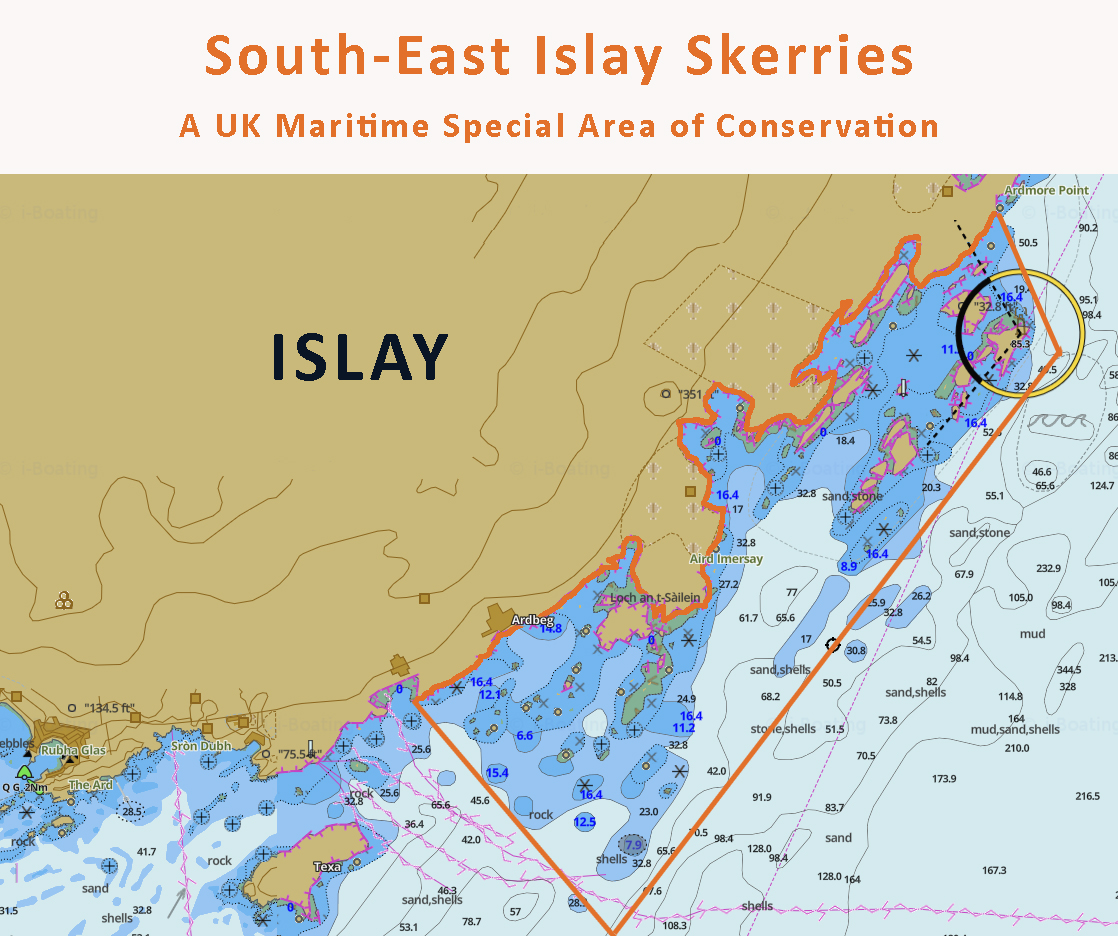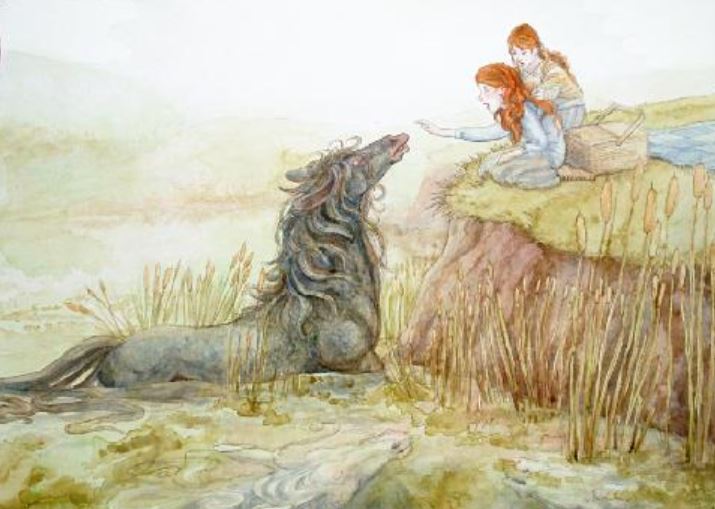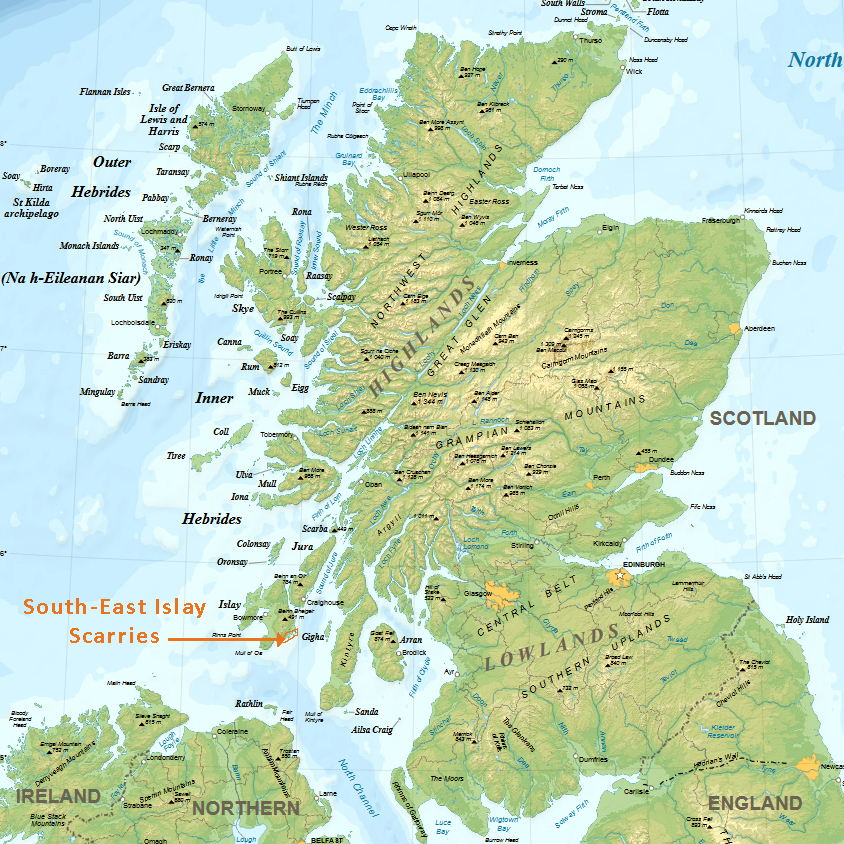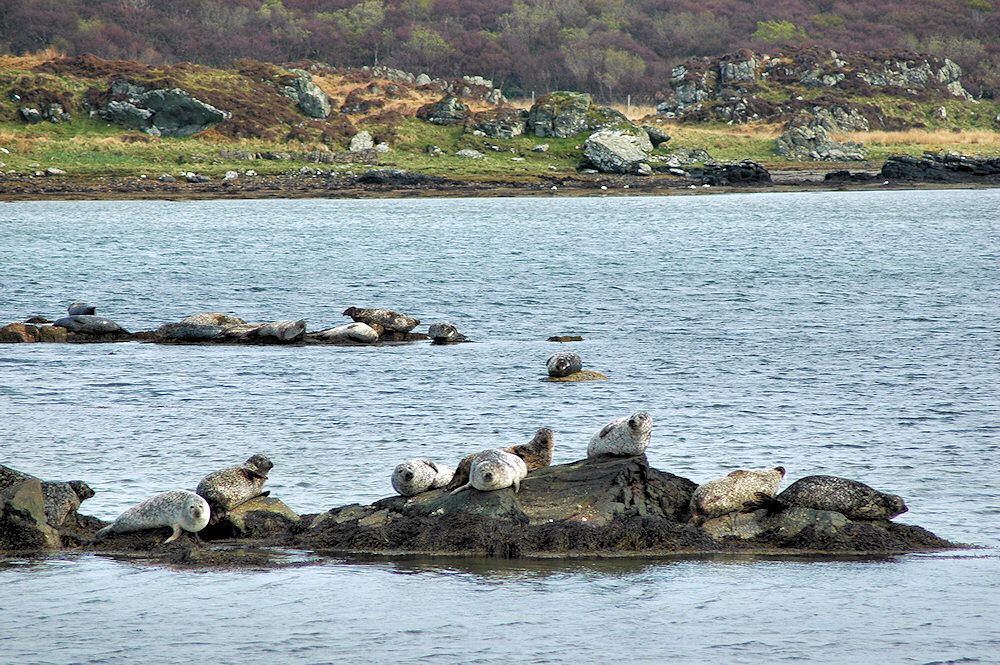South-East Islay Skerries – Monday Map
A hauntingly beautiful seascape, the skerries along the southeastern coast of the Isle of Islay are now a nature preserve
Home to charming marine life and at least one species of scary skerry folklore
click photos to enlarge
Skerry is the name given to any of the countless little islets that dot the Scottish seacoast, from the Kintyre peninsula at the nation’s southwest corner, to the subarctic Shetland Islands far to the north. The Isle of Islay, the southernmost main island of the Inner Hebrides, just west of Kintyre, is surrounded by a necklace of skeeries ranging from small islands filled with nesting birds, to minuscule teeth of jagged rock barely rising from the surrounding shallow seas that are choked with thick kelp forests and teaming with aquatic creatures.
They were also known to be the haunt of kelpies, shapeshifting water spirits of ancient Pictish folklore, who often came ashore in the physical guise of a horse. Those unfortunate enough to encounter one were beguiled by the promise of a free ride on a beautiful mount, only to be unable to dismount before the kelpie returned to the depths to drown and devour them.
Not exactly Disney’s Little Mermaid.
Before the advent of modern conveniences, villages along Islay’s stormy southeast coast depended upon their local skeeries as a source of food, from seabird eggs, to shellfish, to larger marine life. All such traditions came to an end in 2005, when the South-East Islay skeeries became an official protected Area of Special Conservation.
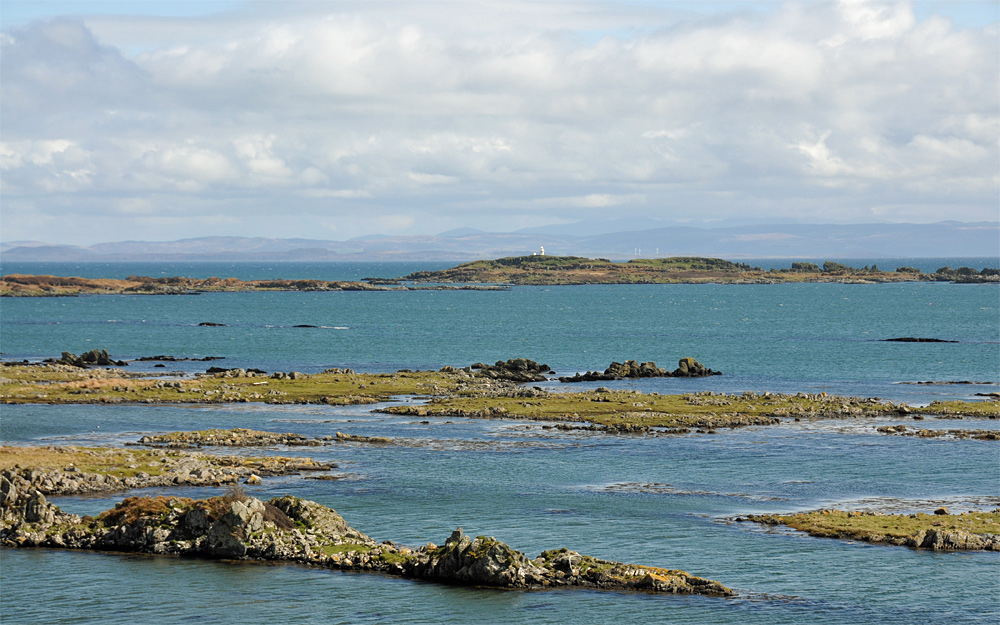
click to enlarge
The Kintyre Peninsula is seen in the distance of this photo, miles beyond the lighthouse that stands on a small skerry at about the midway way point of the South-East Islay Skerries SAC.
While there are five other locations on Islay designated as protection areas for birds, the South-East Islay Skeeries received their specific designation as a marine ASC due to an important colony of some 600 harbor seals (Phoca vitulina) that rely on the area for pupping, molting, and hauling-out areas, where seals leave the water for long periods of time to socialize, usually segregated by sex and age group.
Some 80% of the SAC is made up of marine areas and sea inlets, while 18% is consists of the skeeries, as well as sea cliffs and the rocky shingle along the main island. The remaining 2% is salt marshes and salt pastures. The topography includes a series of underwater ridges, which provide the seals unique opportunities for hunting and sheltering from the strong currents in that location.
On the coastline near the southern end of the South-East Islay Skerries SAC is the Ardbeg distillery. One of nine active single malt whisky distilleries on Islay, several being known for producing the most robust single malts in the world, Ardbeg makes the peatiest, smokiest single malt Scotch whisky available today.
In 2017, Ardbeg released a special expression of their whisky named Kelpie, in honor of the local kelpie legends and the fact it has a particularly volatile and maritime character, not for the timid tippler of landlubber libations. And you can read an exclusive feature article on Ardbeg Kelpie at our sister site One Man’s Malt.
photos in this post are by Armin Grewe. Check out his marvelous photoblog
And his text and photo blog about one of the coolest places Planet Earth
